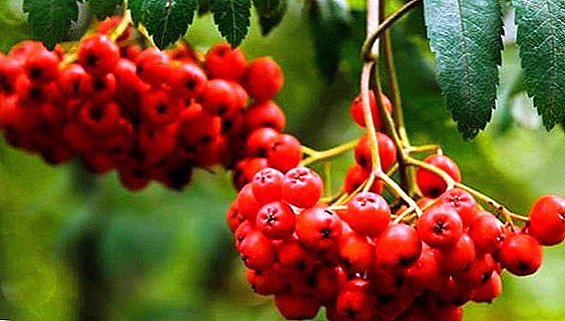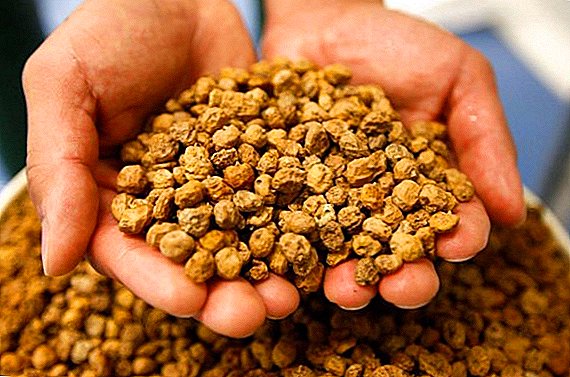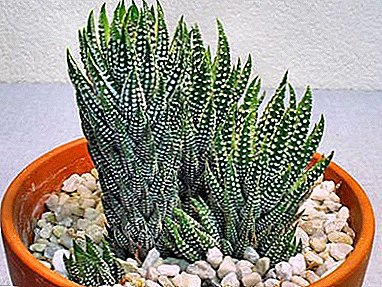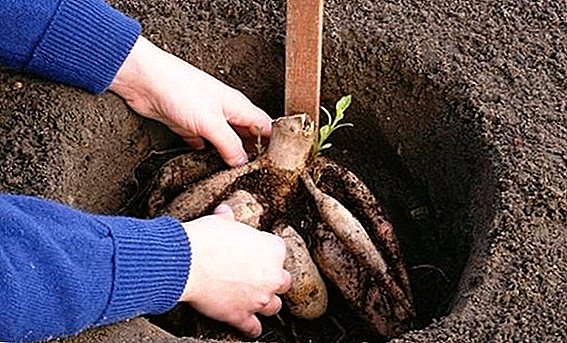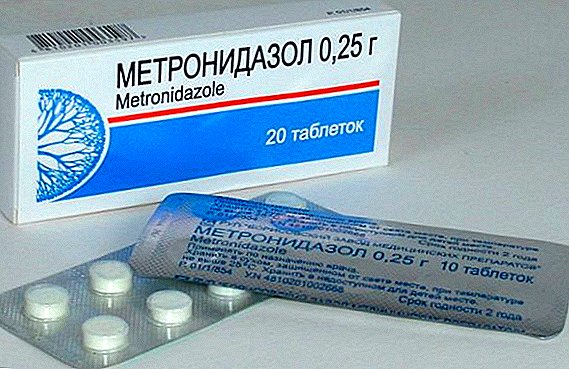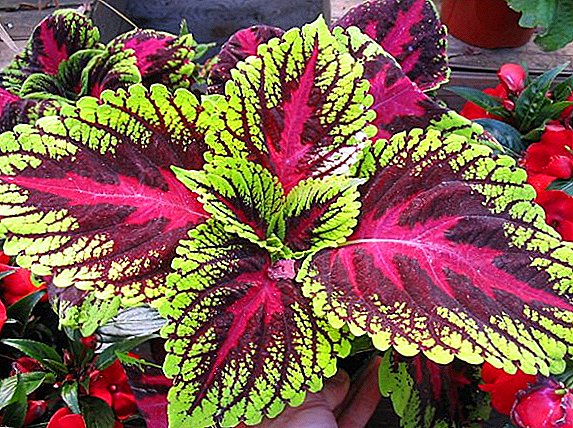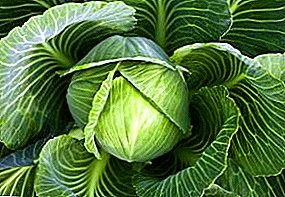 White cabbage is one of the most popular vegetables in many countries. Its popularity is due to the simplicity of care and the presence in the composition of useful for the human body vitamins and minerals. In addition, it is low-calorie. We will talk about the beneficial properties of white cabbage and how it can harm, in this article.
White cabbage is one of the most popular vegetables in many countries. Its popularity is due to the simplicity of care and the presence in the composition of useful for the human body vitamins and minerals. In addition, it is low-calorie. We will talk about the beneficial properties of white cabbage and how it can harm, in this article.
Calorie, Vitamins and Minerals
White cabbage has a calorific value of only 28 kcal per 100 g of product. Its nutritional value is as follows:
- proteins - 1.8 g (2.2%);
- fat 0.2 g (0.31%);
- carbohydrates - 4.7 g (3.67%);
- dietary fiber - 2 g (10%);
- water - 90.4 g (3.53%).
Did you know? The largest white cabbage weighing 63 kg was grown by American Scott Robb in 2012. Previously, the record was considered to be a vegetable grown by J. Barton from Yorkshire. The head weighed 51.8 kg and recorded in the Guinness Book of Records.White cabbage has a unique chemical composition, as it is very rich in vitamins and minerals. Its leaves contain organic acids, phytoncides, minerals, fiber.
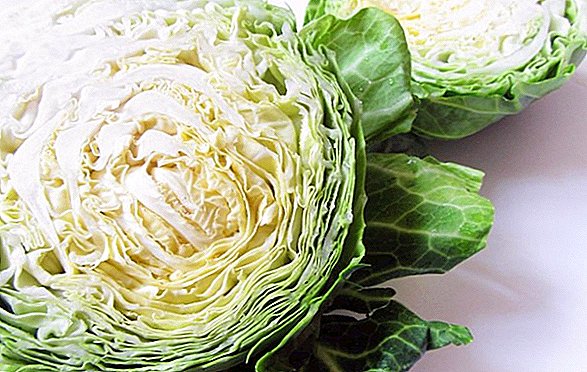 Vegetable is very rich in vitamin C - it is enough to eat only 200 g, so that the body receives the necessary daily rate of ascorbic acid. Content in cabbage exceeds its amount in lemons and tangerines.
Vegetable is very rich in vitamin C - it is enough to eat only 200 g, so that the body receives the necessary daily rate of ascorbic acid. Content in cabbage exceeds its amount in lemons and tangerines.A large amount of vitamin C is found in the fruits of actinidia, elderberry, honeysuckle, Manchurian walnut, white currant, raspberry, green onion, radish.
In addition, in the head of cabbage there is a rare vitamin-like substance U. Another vitamins contained in white cabbage:
- BUT;
- thiamine (B1);
- Riboflavin (B2);
- choline (B4);
- pyridoxine (B6);
- folic acid (B9);
- alpha tocopherol (E);
- phylloquinone (C);
- PP;
- niacin.
Benefits for the human body
Regular eating by a person of such a varied composition of white cabbage is definitely capable of bringing benefits to his body. So, the content of vitamin C has an antiviral and tonic effect. Folic acid in the composition affects the normalization of metabolism, improves blood circulation, is useful for women who are expecting a child. 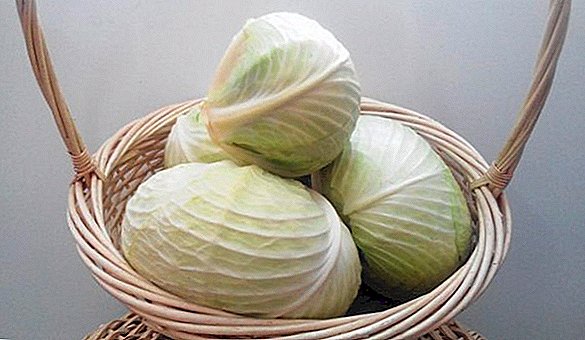
Did you know? With the help of heat treatment, it is possible to increase the amount of vitamin C in cabbage, because ascorbigen contained in vegetables turns into ascorbic acid when heated.Tartronic acid in fresh vegetables (destroyed during heat treatment) is very useful - it is important to use it for the prevention of sclerosis, cholesterol and fat deposits.
Since the cabbage contains a sufficient amount of potassium salts, it is capable of removing excess fluid, therefore, it is recommended for people who suffer from kidney problems, gallstone disease.
Vegetable is recommended for gout, heart disease, constipation, problems with blood vessels. Cabbage juice is an excellent expectorant for colds, ARVI, flu and upper respiratory tract inflammations. It is also recommended for cleansing the liver, with low gastric acidity.
Cabbage pickle perfectly helps to remove the morning effects of hungover syndrome, and sauerkraut, eaten before the feast, will save you from severe intoxication. 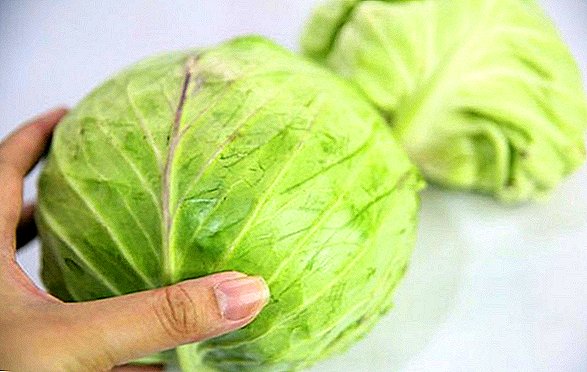 Interestingly, the properties of cabbage can vary, depending on the form in which it is eaten. So, for example, a raw vegetable can relieve constipation and stimulate the intestines. But in boiled it, on the contrary, strengthens. The amount of ascorbic acid during heat treatment increases, and tartronic acid is evaporated.
Interestingly, the properties of cabbage can vary, depending on the form in which it is eaten. So, for example, a raw vegetable can relieve constipation and stimulate the intestines. But in boiled it, on the contrary, strengthens. The amount of ascorbic acid during heat treatment increases, and tartronic acid is evaporated.
Perhaps the most famous and popular of the beneficial properties of white cabbage when applied externally should be called anti-inflammatory and anti-inflammatory. Cabbage leaves attached to the site of inflammation or edema can reduce them in a short time.
So the sheets are applied to the inflammations that occur after vaccination in young children, to the enlarged veins in those whose work is associated with heavy physical exertion on the legs, to the joints in which painful sensations are felt, to the chest during mastitis. In addition, it is known about the wound healing and hemostatic properties of the vegetable.
Slimming
Often cabbage can be found among the ingredients of various diets, both medicinal - for people with gastrointestinal diseases, and for those who wish to lose weight.
Vitamins U and PP with regular consumption can affect the healing of the gastric mucosa, normalize the work of the digestive glands, prevent the development of ulcers. 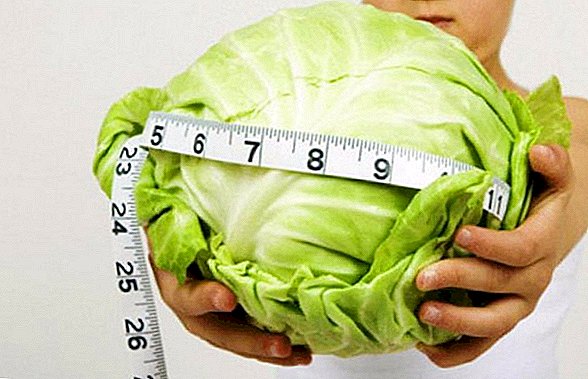 Choline in the composition leads to the establishment of fat metabolism, fiber - to cleanse the intestines, normalization of stool.
Choline in the composition leads to the establishment of fat metabolism, fiber - to cleanse the intestines, normalization of stool.
White cabbage for beauty
Because of the presence of a wide range of vitamins cabbage has found wide application in cosmetology. Its regular use for the skin removes pigment spots, cleanses and tones it, improves the complexion, elasticity and condition of the hair.
Here are some ways to use white cabbage in beauty recipes.
Mask for the face
For dry skin. Chop the fresh cabbage leaves so that the raw material is one glass. Then pour half of a cup of milk over them. Put on the stove, boil and boil for a few minutes, until the sheets are soft. Cool slightly and use a blender to knock a homogeneous mass. The mixture is applied to the face and neck. Clean with cool water in 10-15 minutes.
For fading skin. Chop two fresh leaves, add a teaspoon of honey, teaspoon of yeast and ¼ cup of apple juice. Mixture lubricate the face and neck, hold for 20 minutes, then gently rinse with a cotton swab.
Against peeling. Prepare the mixture, as in the previous mask, and then add one raw egg and one tablespoon of any vegetable oil on hand. Apply to face for 20 minutes. Against age spots. First, wipe the skin of the face with vegetable oil. It is better if it is olive oil or jojoba oil. Then chop the cabbage leaves in a blender and put them on the face. After a quarter of an hour, wash the mask with warm water.
Against irritations. Chop fresh leaves, add three teaspoons of cottage cheese, as well as one teaspoon of lemon juice. In a separate container, mix one teaspoon of honey and half a cup of warm boiled water. Then combine all the ingredients. 10-15 minutes after application to face wash with warm water.
For cleansing and getting rid of acne. Leaves chop. Combine with ½ lemon juice, one teaspoon of hydrogen peroxide (5%), one teaspoon of viburnum juice. Apply to face for five to seven minutes twice a week.
Cabbage leaves are also good because you can just put them on the face for half an hour in a washed form, and then wash yourself with cool water. Such attachments will soon remove the oily shine from the skin, relieve puffiness, give the face a healthy, radiant look.
Important! Face masks are best applied after taking a bath or shower, when the face is steamed and pores are well opened..
Hair lotion
Hair lotion is prepared as follows. Cabbage, spinach and lemon juice mixed in equal proportions. Use for daily rubbing in the head for a week. 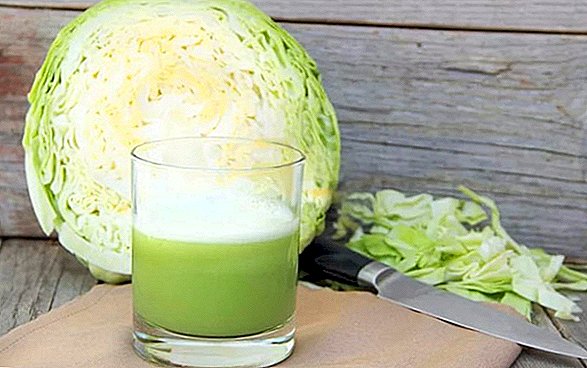 Balm for hair. Chopped leaves of cabbage, burdock and nettle (50 g) pour milk (400 ml), boil until soft. After the broth has cooled, it should be squeezed and add lemon juice (20 g) to it. Rub the balm into the scalp, wash it off after half an hour.
Balm for hair. Chopped leaves of cabbage, burdock and nettle (50 g) pour milk (400 ml), boil until soft. After the broth has cooled, it should be squeezed and add lemon juice (20 g) to it. Rub the balm into the scalp, wash it off after half an hour.
Mask for fine hair. Cabbage, onion juice and camphor oil mix in a ratio of 2: 1: 1. Apply to the head, well rubbing it into the skin. Cover the head with a warm towel. After 1-1.5 hours, wash your hair as usual. To achieve a good result, it is recommended to apply the mask once or twice a week for two months.
Anti-dandruff conditioner. 100 g of dried leaves of burdock and nettle insist in hot water for half a day. Add sauerkraut juice (50 g). Use to rinse.
Mask to strengthen hair. Prepare a mixture of one tablespoon of cabbage juice and aloe juice. Add a teaspoon of honey and castor oil. Massaging the head, rub into the skin. After 10 minutes, wash your hair as usual, and rinse with a mixture of cabbage juice with chamomile extract. 
For hand care
The following products will help moisturize the skin of the hands and heal microcracks:
- Cabbage, cucumber, squash and onion juice mixed with vegetable oil in equal proportions. Use for rubbing into the skin of the hands in the mornings and evenings.
- Lubricate hands with cabbage pickle for 10-15 minutes. After brine, rinse and apply moisturizer to the skin.
- Keep hands in warm sauerkraut juice for 10 minutes. After the procedure, spread your hands with a nourishing cream.
How to choose a good quality cabbage
When choosing cabbage first thing you should squeeze the head well. If he succumbs to deformation, it means that he has not yet matured. Such leaves will not crunch fresh, will become soft when leaven.
A good quality vegetable can be identified by strong, resilient and dense leaves that are free from any spots or cracks. 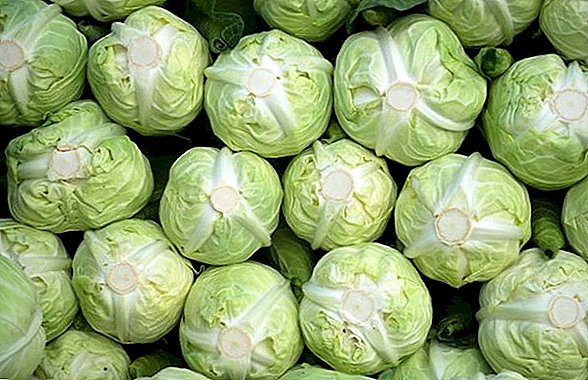
Important! The presence of excessively thick leaves at the base of the cabbage indicates that the vegetable contains too much nitrate. By weight, the head stuffed with chemistry will be much lighter than that grown without harmful additives. Optimally, the vegetable should weigh at least 1 kg.When buying a piece of cabbage, you should pay attention to its cut. It should be light without the presence of brown areas. Their presence will indicate that the vegetable is stored for too long and is already beginning to deteriorate.
How to store
White cabbage can be stored for a long time, but it is important to know in what conditions it is necessary to preserve it. Information about its proper storage will also save as many useful substances as possible.
At the dacha you can grow other, no less useful types of cabbage: cauliflower, Beijing, Savoy, kale, pak choi, broccoli, kohlrabi.
The optimum temperature for storing vegetables is 0- + 5 ° C. White cabbage will lie down to -8 ° C - storage at lower temperatures will lead to freezing.
Before laying the vegetable for storage, it must be dried well for 10-12 hours and discarded from rotted specimens. 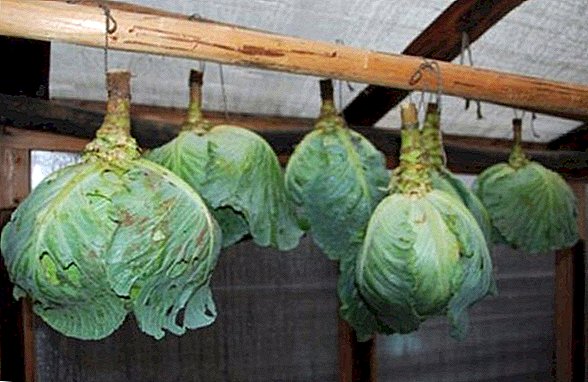 Those who have the opportunity, store cabbage in a cellar in a suspended or unfolded state on the flooring. On the ground, vegetable storage is not recommended. In an apartment, cabbage can be stored either in the refrigerator or on a cold loggia, balcony. Before putting it in the refrigerator, it is wrapped in two or three layers of cling film.
Those who have the opportunity, store cabbage in a cellar in a suspended or unfolded state on the flooring. On the ground, vegetable storage is not recommended. In an apartment, cabbage can be stored either in the refrigerator or on a cold loggia, balcony. Before putting it in the refrigerator, it is wrapped in two or three layers of cling film.
On the balcony, you can build a wooden box or take a bag and put there heads of cabbage, sprinkling them with sand or wrapping each of them with paper.
With these methods, cabbage can be stored all winter, right up to the onset of spring. The storage time will depend on the type of vegetable.
Important! Before using the cabbage for cooking, it should be placed in salt water for 30 minutes and then rinsed well with a strong stream of water. This will clean the vegetable from dirt, parasites and insecticide residues.
White cabbage in cooking
In cooking, cabbage is one of the most popular vegetables along with potatoes, cucumbers and tomatoes.
It is actively used for cooking salads, cabbage rolls, first and second courses. It is used in fresh, boiled, stewed, fried, baked, fermented and pickled forms. 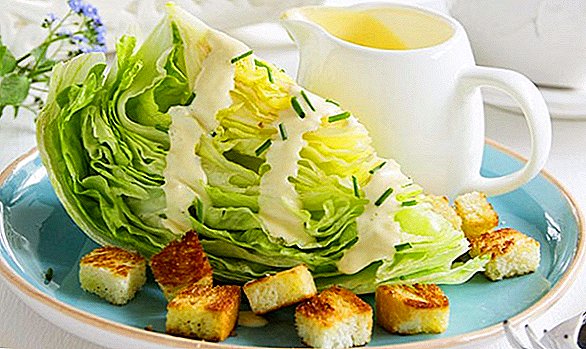 In addition to such well-known dishes such as borsch, cabbage soup, cabbage rolls, stews, cabbage is also prepared burgers, used for filling in pies, pies, pancakes, make pancakes from it.
In addition to such well-known dishes such as borsch, cabbage soup, cabbage rolls, stews, cabbage is also prepared burgers, used for filling in pies, pies, pancakes, make pancakes from it.
The greatest amount of nutrients is stored in fresh and fermented vegetables.
Did you know? Chinese people guessed to eat sauerkraut who soaked it in rice wine. In the 3rd century BC. this dish was fed by the builders who erected the Great Wall of China.
Contraindications and harm
Despite the absolute usefulness of cabbage, some people use it is undesirable or prohibited. These categories include:
- those who have problems with the pancreas;
- those with enteritis, colitis;
- people with increased acidity of the stomach;
- with a history of liver disease;
- experiencing frequent disorders of the stomach and intestines, suffering from irritable bowel syndrome;
- recent myocardial infarction.
It is important to understand that over-eating cabbage can lead to flatulence and bloating.
It is undesirable to eat a stalk because it retains all the harmful substances absorbed by the vegetable during growth.


